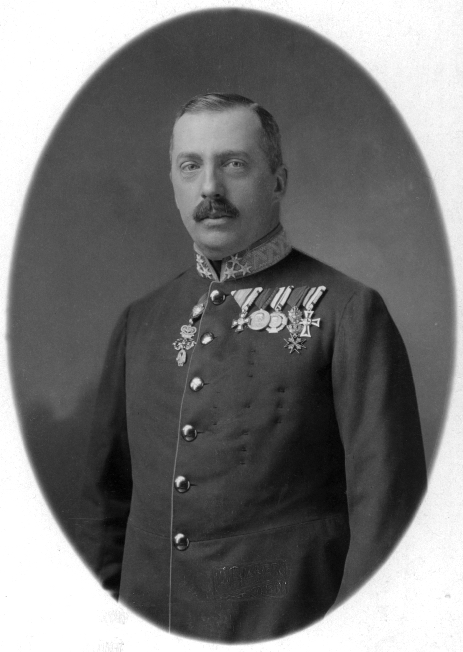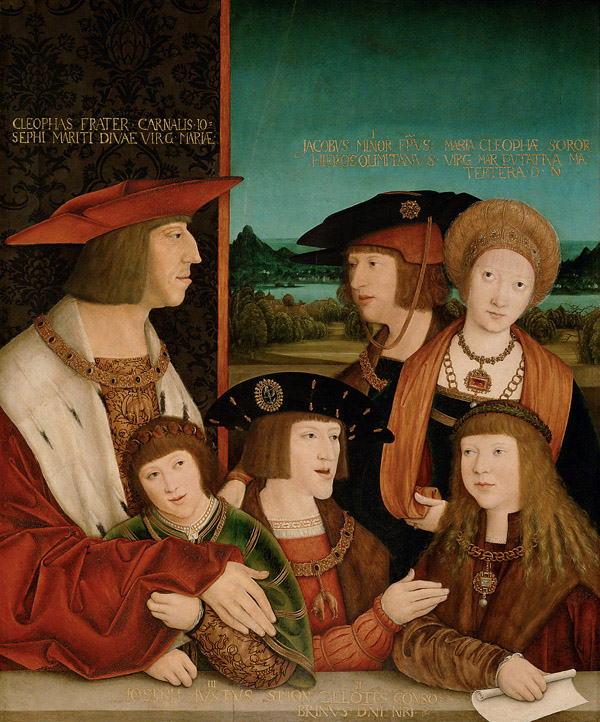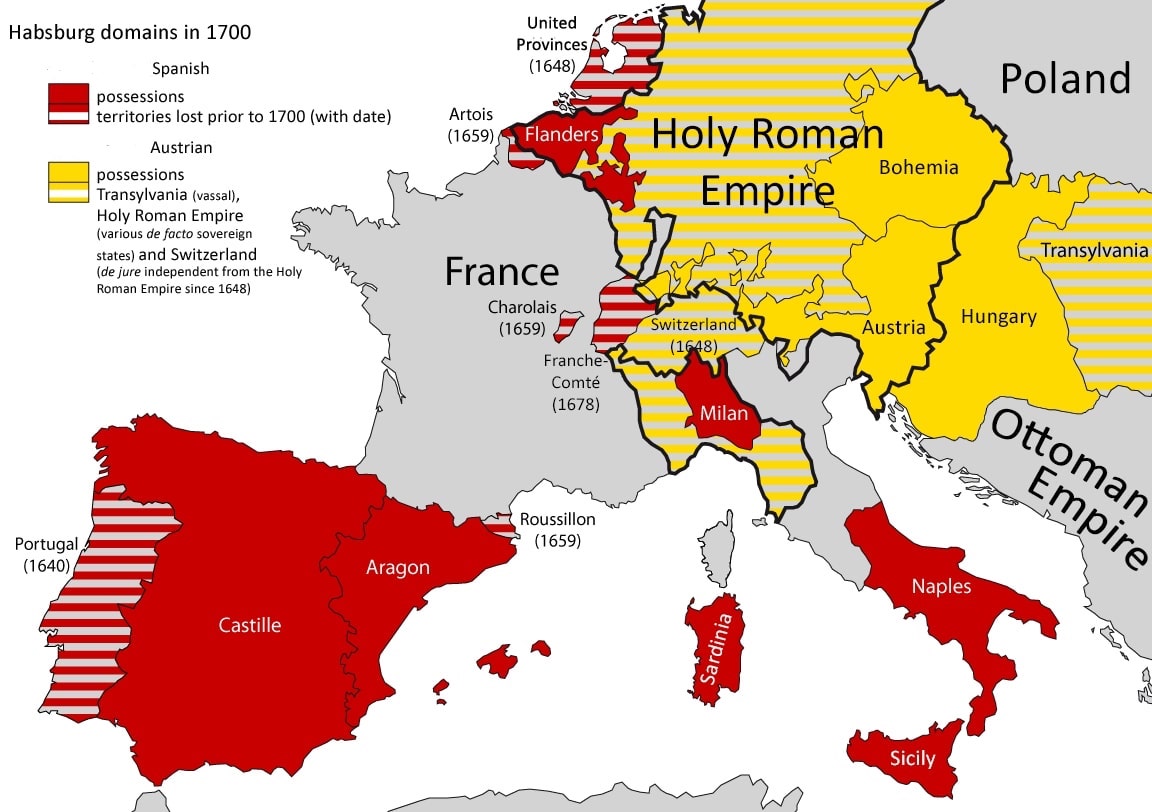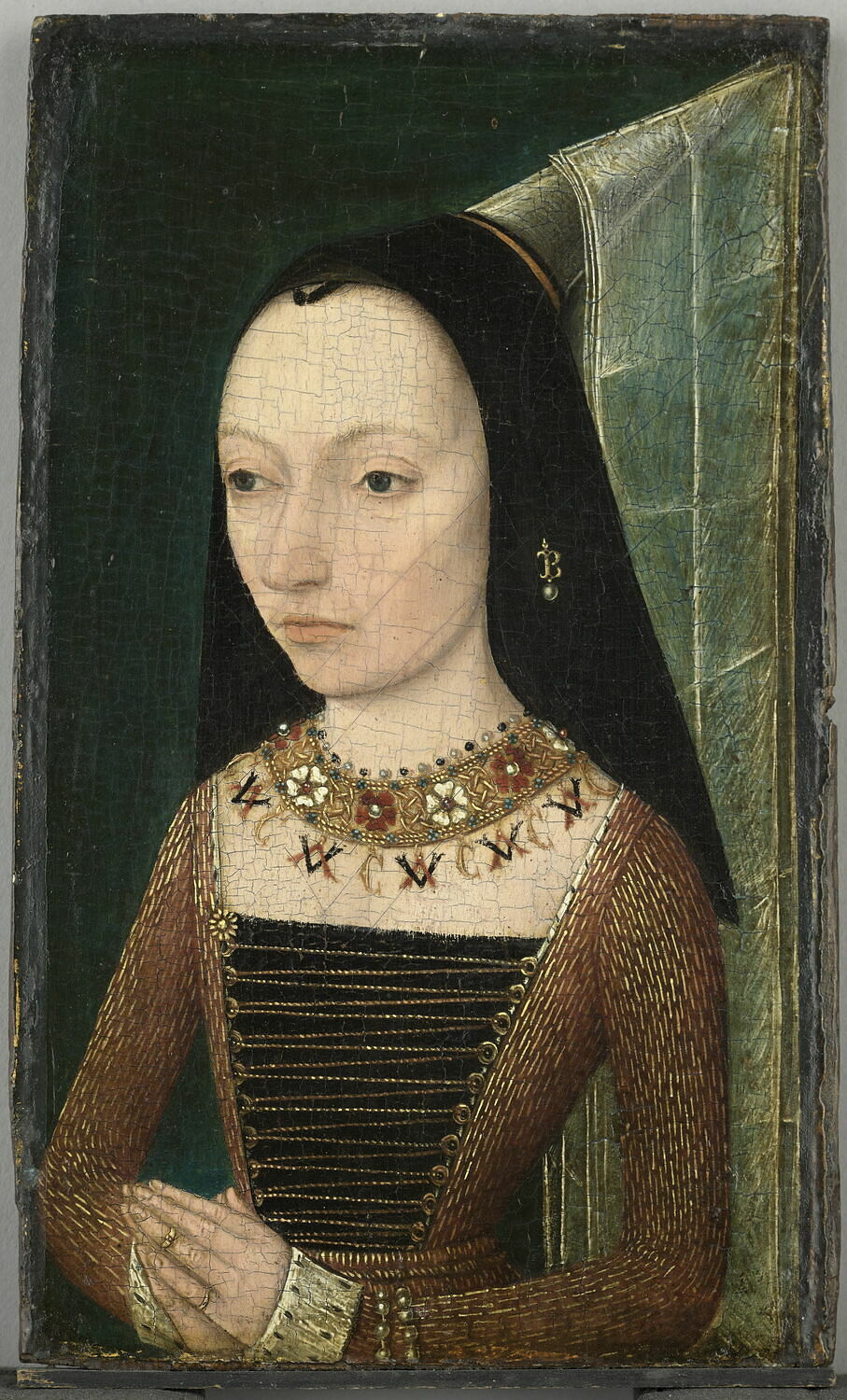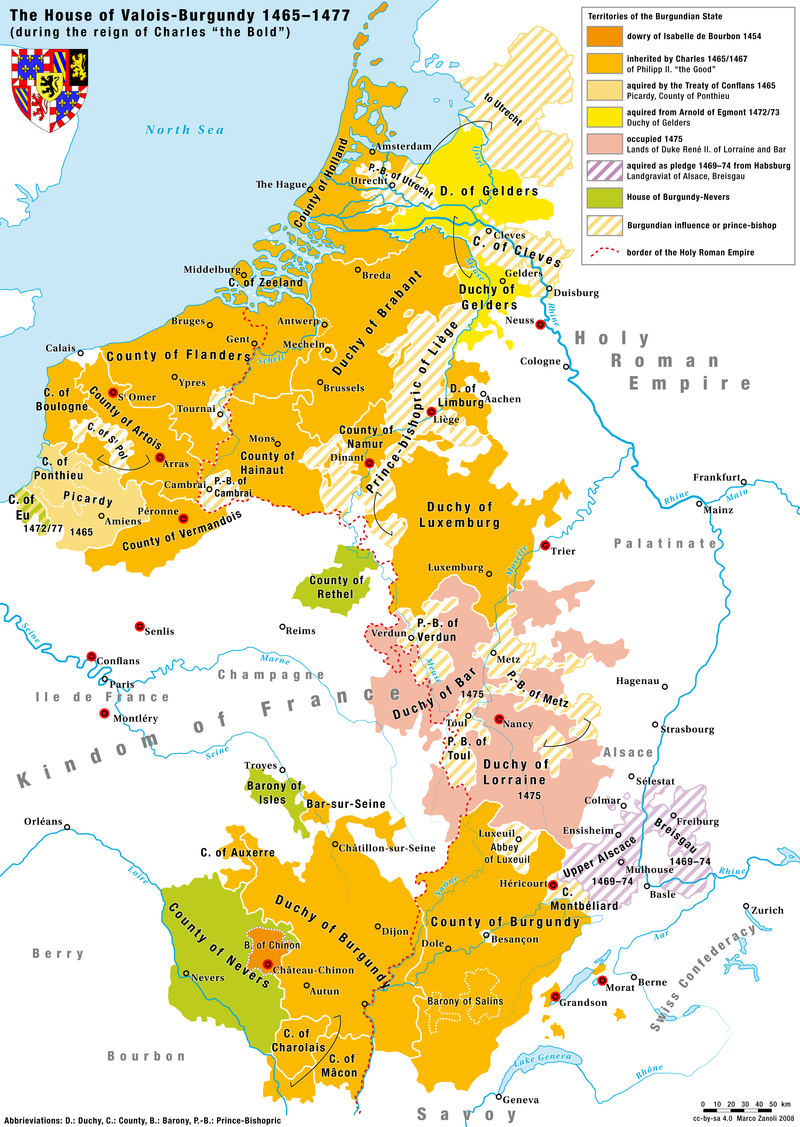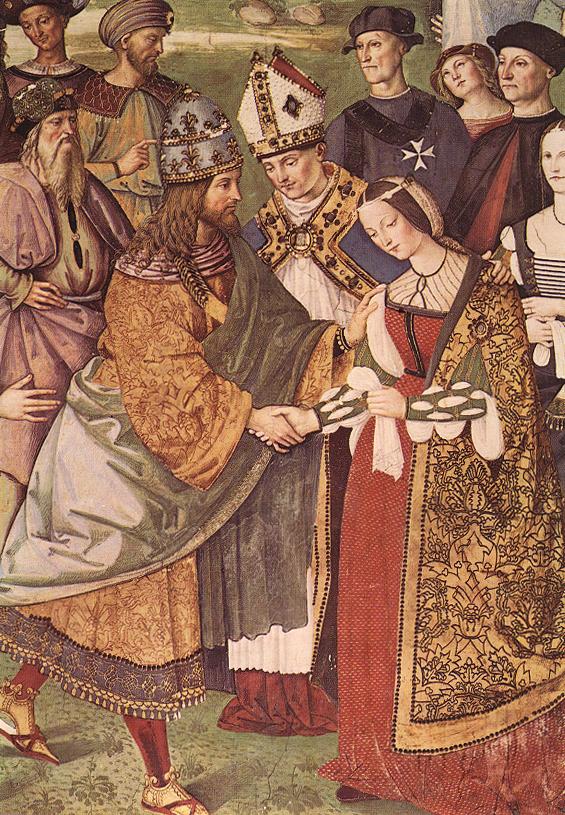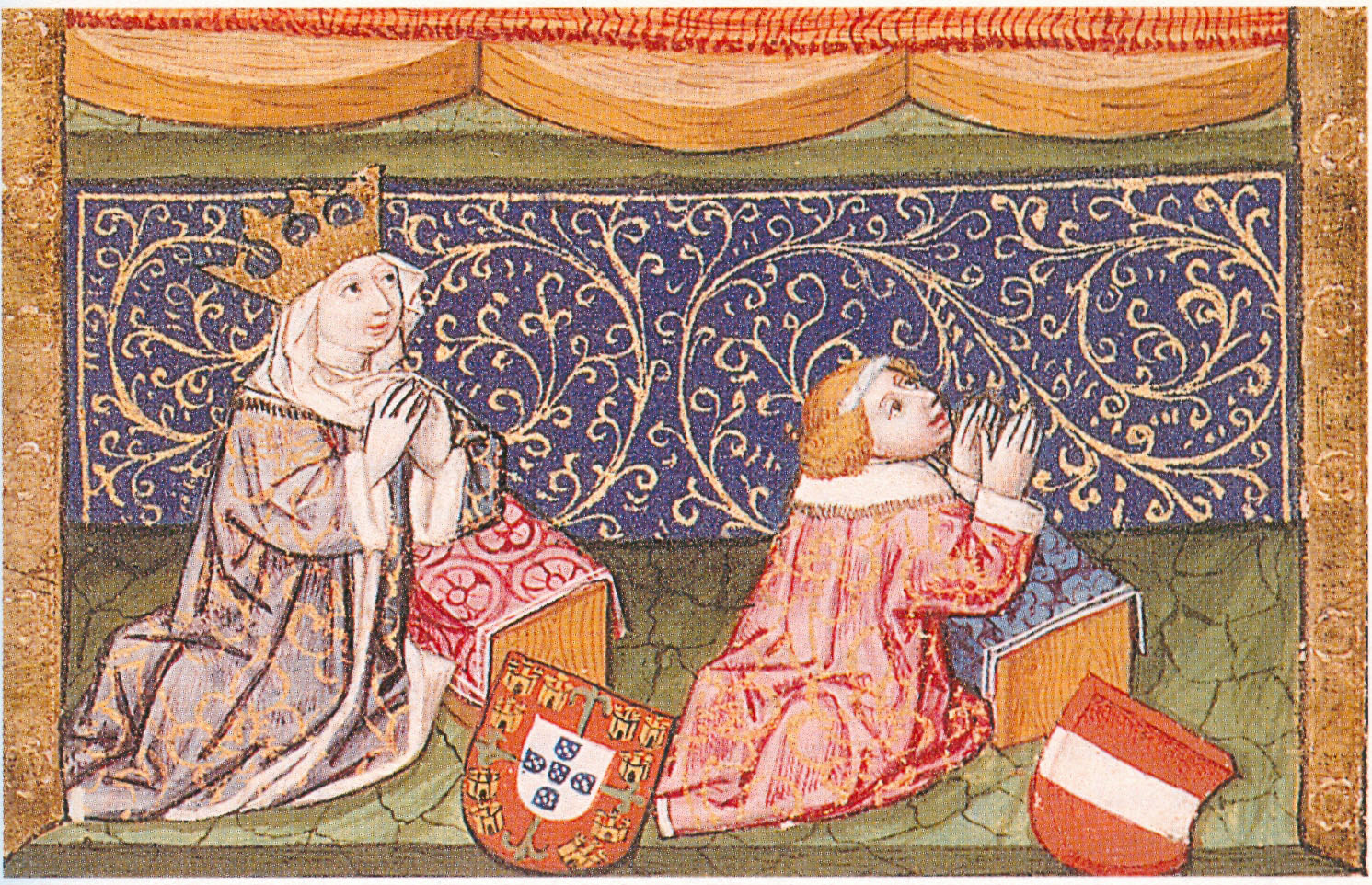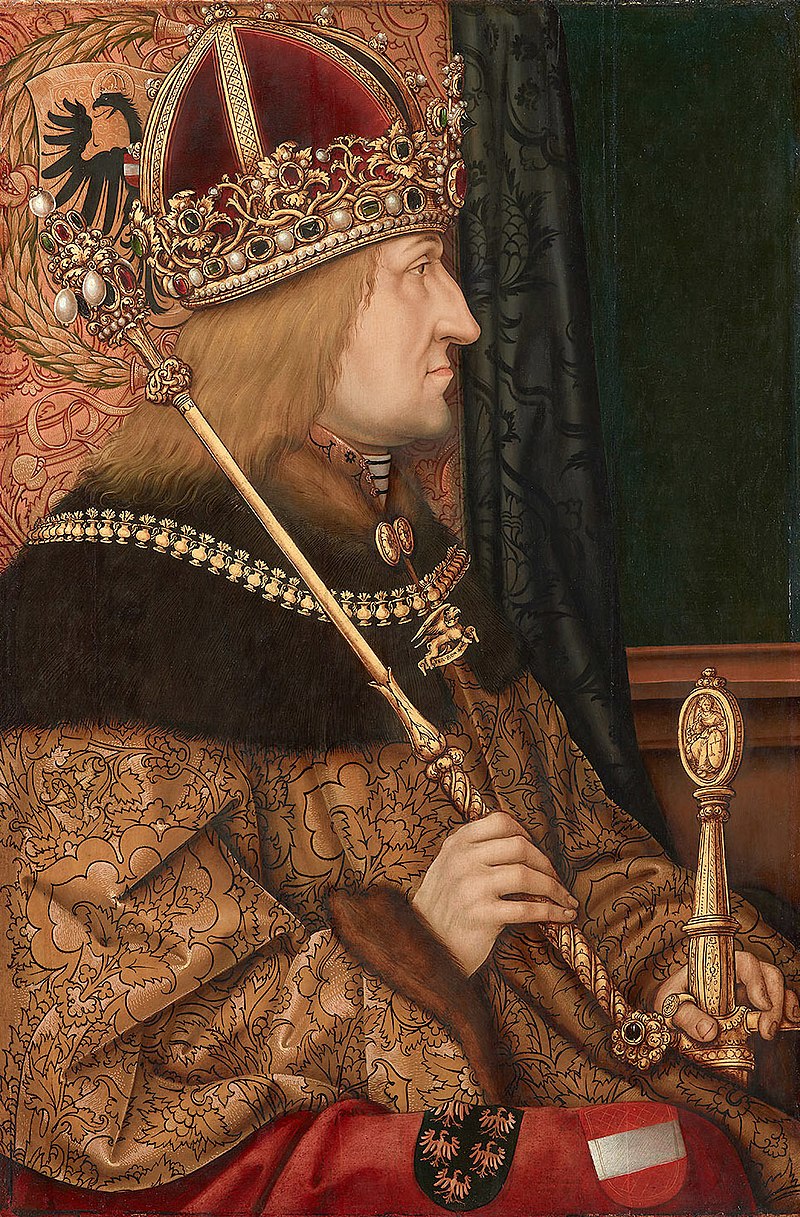by Susan Flantzer
© Unofficial Royalty 2023
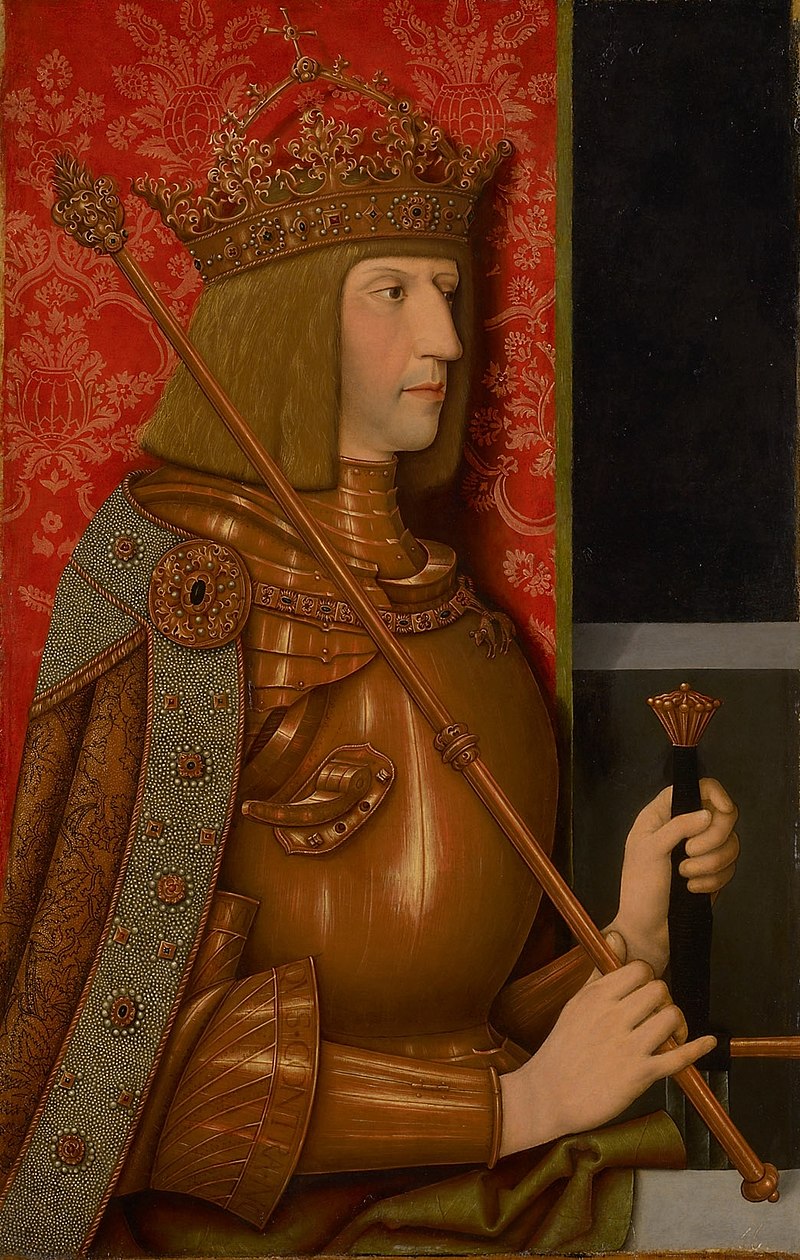
Maximilian I, Holy Roman Emperor, Archduke of Austria by Bernhard Strigel; Credit – Wikipedia
The Holy Roman Empire was a limited elective monarchy composed of hundreds of kingdoms, principalities, duchies, counties, prince-bishoprics, and Free Imperial Cities in central Europe. The Holy Roman Empire was not really holy since, after Holy Roman Emperor Charles V in 1530, no emperors were crowned by the pope or a bishop. It was not Roman but rather German because it was mainly in the regions of present-day Germany and Austria. It was an empire in name only – the territories it covered were mostly independent each with its own rulers. The Holy Roman Emperor directly ruled over only his family territories, and could not issue decrees and rule autonomously over the Holy Roman Empire. A Holy Roman Emperor was only as strong as his army and alliances, including marriage alliances, made him, and his power was severely restricted by the many sovereigns of the constituent monarchies of the Holy Roman Empire. From the 13th century, prince-electors, or electors for short, elected the Holy Roman Emperor from among the sovereigns of the constituent states.
Frequently but not always, it was common practice to elect the deceased Holy Roman Emperor’s heir. The Holy Roman Empire was an elective monarchy. No person had a legal right to the succession simply because he was related to the current Holy Roman Emperor. However, the Holy Roman Emperor could and often did, while still alive, have a relative (usually a son) elected to succeed him after his death. This elected heir apparent used the title King of the Romans.
********************

Maximilian’s parents Friedrich III, Holy Roman Emperor and Eleanor of Portugal
Maximilian I reigned as King of the Romans, the de facto leader of the Holy Roman Empire from 1493 – 1508, Holy Roman Emperor from 1508 – 1519, and ruled his family lands as Archduke of Austria from 1493 – 1519. Maximilian was born on March 22, 1459, at Wiener Neustadt Castle in Wiener Neustadt, Archduchy of Austria now in the state of Lower Austria in Austria. He was the second of the five children and the second but the eldest surviving son of Friedrich III, Holy Roman Emperor, Duke of Styria, Carinthia, and Carniola, Archduke of Austria and Infanta Eleanor of Portugal. As his father was sovereign of the Austrian hereditary lands, Maximilian and his siblings received the title of Archduke/Archduchess of Austria at birth. Maximilian’s paternal grandparents were Ernst II, Duke of Styria, Carinthia and Carniola and his second wife Cymburgis of Masovia, a member of the Polish Piast dynasty. His maternal grandparents were King Duarte of Portugal and Eleanor of Aragon.
Maximilian had four siblings but only one survived childhood:
- Archduke Christoph of Austria (1455 – 1456), died in infancy
- Archduchess Helene of Austria (1460 – 1462), died in early childhood
- Archduchess Kunigunde of Austria (1465 – 1520), married Albrecht IV, Duke of Bavaria, had seven children
- Archduke Johannes of Austria (1466 – 1467), died in early childhood
Since his elder brother died in infancy, Maximilian was prepared to be his father’s heir from an early age. When Maximilian was eight-years-old, his mother Eleanor, aged 32, died on September 3, 1467, from dysentery. In 1486, Friedrich III, Holy Roman Emperor ensured that his son Maximilian would succeed him as Holy Roman Emperor when the prince-electors unanimously elected Maximilian King of the Romans. The title King of the Romans was used to designate the successor to a Holy Roman Emperor elected during the lifetime of a sitting Emperor.
As early as 1463, when Maximilian was just four years old, Pope Pius II, who had previously been an advisor to Maximilian’s father as Enea Silvio Piccolomini, suggested a marriage between Maximilian and six-year-old Mary of Burgundy, the only child of Charles the Bold of Burgundy and the second of his three wives Isabella of Portugal. In 1467, Charles succeeded his father Philip III, Duke of Burgundy, and became Charles I, Duke of Burgundy, the ruler of the vast and rich Burgundian State that consisted of parts of the present-day Netherlands, Belgium, Luxembourg, France, and Germany. If Charles the Bold did not have a son, his daughter Mary would become the Duchess of Burgundy in her own right. In the fall of 1473, the two fathers, Friedrich III and Charles the Bold, met to discuss a possible marriage. However, the negotiations failed and ended after two months.

Maximilian’s first wife Mary, Duchess of Burgundy; Credit – Wikipedia
On January 5, 1477, during the Burgundian Wars, Charles I (the Bold), Duke of Burgundy was killed at the Battle of Nancy. Twenty-year-old Mary of Burgundy, the only child of Charles I, became the Duchess of Burgundy in her own right. Mary feared that King Louis XI of France would try to force her to marry his eldest son, and resumed the marriage negotiations with Holy Roman Emperor Friedrich III to marry his son Maximilian. King Louis XI of France tried to prevent the marriage by declaring that he was Mary’s overlord and refusing to consent to the marriage. However, Friedrich III agreed to the marriage of his son Maximilian and Mary. A proxy marriage was held on April 21, 1477, at Mary’s home, the Priesendorf in Bruges, County of Flanders, one of Mary’s lands, now in Belgium. On August 18, 1477, Maximilian arrived in Ghent, County of Flanders, now in Belgium, and on the next day, Maximilian and Mary were married in person.
Maximilian and Mary had three children:
- Philip IV, Duke of Burgundy (1478 – 1506), also called Philip of Habsburg and Philip the Handsome, married Juana I, Queen of Castile and León, Queen of Aragon, had six children, all were kings or queen consorts
- Margaret of Austria, Governor of the Habsburg Netherlands (1480 – 1530), married (1) Juan of Aragon, Prince of Asturias, the only son and heir of King Ferdinand II of Aragon and Queen Isabella I of Castile, who died from tuberculosis, no children (2) Philibert II, Duke of Savoy, no children
- Franz of Austria (born and died 1481)
It was through the marriage of Maximilian and Mary’s son Philip to Juana I, Queen of Castile and León, Queen of Aragon that the Habsburg lands would be joined with the Spanish lands. Philip and Juana’s son Carlos, best known as Charles V, Holy Roman Emperor, was one of the most powerful ever monarchs and had a large number of titles due to his vast inheritance of the Burgundian, Spanish, and Austrian realms. Carlos I was not only the first King of a united Spain and Charles V, Holy Roman Emperor, but he was also Charles I, Archduke of Austria, and Charles II, Lord of the Netherlands, among many other titles.
Sadly, Maximilian and Mary’s marriage lasted only five years. In March 1482, despite being pregnant, Mary participated in a hunt in the woods near Wijnendale Castle in Flanders along with her husband. She was an experienced rider and she held her falcon in one hand and the reins in the other hand. However, Mary’s horse stumbled over a tree stump while jumping over a newly dug canal. The saddle belt under the horse’s belly broke causing Mary to fall out of the saddle and into the canal with the horse on top of her. Mary was seriously injured and was transported to Prinsenhof, her palace in Bruges, where she died, aged twenty-five, several weeks later from internal injuries. Mary was buried next to her father in the Church of Our Lady in Bruges in Flanders, now in Belgium. Maximilian and Mary’s son Philip, who was not quite four years old, succeeded his mother as ruler of the Burgundian State under the guardianship of his father Maximilian.

Anne, Duchess of Brittany, Maximilian’s second wife; Credit – Wikipedia
Maximilian had a short second marriage to Anne, Duchess of Brittany in her own right. On September 9, 1488, Anne’s father François II, Duke of Brittany died as a result of a fall from his horse, and Anne became the Duchess of Brittany in her own right. Anne feared for the independence of her duchy against the might of France and so she arranged a marriage for herself with Maximilian. Maximilian and Anne were married by proxy in 1490, which turned out to be a marriage in name only. King Charles VIII succeeded his father as King of France in 1483. However, he was a minor, and his elder sister Anne of France and her husband Peter II, Duke of Bourbon, served as regents. They refused to allow an in-person marriage between Anne and Maximilian because it would put the Habsburgs, Maximilian’s family, on two French borders. A month before Anne of Brittany’s father died, he had been forced to sign the Treaty of Verger and thereby becoming a vassal of King Charles VIII of France and agreeing to seek Charles’ consent before arranging the marriage of his daughters. The Treaty of Verger was used to force Anne of Brittany to annul her proxy marriage to Maximilian and marry King Charles VIII of France.
On August 19, 1493, Maximilian’s father died and he succeeded to the Habsburg hereditary lands, becoming the reigning Archduke of Austria. He also became the de facto ruler of the Holy Roman Empire via his election as King of the Romans in 1486. In 1508, Maximilian proclaimed himself the elected Holy Roman Emperor with the approval of Pope Julius II, ending the long tradition of requiring a papal coronation for the adoption of the Holy Roman Emperor title.

Bianca Maria Sforza, Maximilian’s third wife; Credit – Wikipedia
Maximilian married again to twenty-one-year-old Bianca Maria Sforza, the daughter of Galeazzo Maria Sforza, 5th Duke of Milan and his second wife Bona of Savoy. In 1476, at the age of 4, Bianca Maria had been married to her 11-year-old first cousin Philibert I, Duke of Savoy, who died from tuberculosis at the age of 17. Maximilian and Bianca Maria were married by proxy on November 30, 1493, in the Duchy of Milan. Bianca Maria then traveled with her large dowry and large escort to Innsbruck. However, because Maximilian was dealing with a Turkish invasion of his Duchy of Styria, Bianca had to wait until March 16, 1494, to marry Maximilian in person.
The marriage was not a happy one. Maximilian complained that Bianca Maria may have been more beautiful than his first wife Mary of Burgundy, but she was not as intelligent. He considered Bianca Maria uneducated, talkative, naive, wasteful with money, and careless. Bianca Maria had a miscarriage shortly after her marriage and it seems that she was never able to conceive again. After 1500, Maximilian lost all interest in Bianca Maria. She lived with her own court of people from Milan in various castles. Bianca Maria, aged 38, died on December 31, 1510, in Innsbruck, County of Tyrol, now in Austria. Maximilian was not in Innsbruck at the time of her death and did not return to attend her funeral.

Maximilian’s grandson Charles V, Holy Roman Emperor, also King of Spain, Archduke of Austria, Lord of the Netherlands, and Duke of Burgundy by Bernard van Orley, 1519; Credit – Wikipedia
Maximilian’s reign was marked by the military and political restoration of the House of Habsburg and by the modernization of the administration of the Holy Roman Empire. Maximilian expanded the influence of the House of Habsburg through war, through his own marriage to Mary, Duchess of Burgundy, and the marriage of his son Philip to Juana I, Queen of Castile and León, Queen of Aragon. His grandson, the son of Philip and Juana, was Charles V, Holy Roman Emperor, (reigned 1519 – 1556), King of Spain (reigned 1516 – 1556), Archduke of Austria (reigned 1519 – 1521), Lord of the Netherlands, and Duke of Burgundy (reigned 1506 – 1555). Charles, one of the most powerful ever monarchs, inherited and reigned over the dominions of his mother Juana (Castile and León, and Aragon) which would be united under Charles as the Kingdom of Spain, the dominions of his father Philip (the Burgundian State Philip had inherited from his mother Mary, Duchess of Burgundy, consisting of parts of the present-day Netherlands, Belgium, Luxembourg, France, and Germany), and also the Habsburg dominions of his paternal grandfather Maximilian (Archduchy of Austria, Duchy of Styria, Duchy of Carinthia, and Duchy of Carniola, today parts of Austria and Slovenia). Charles would be elected Holy Roman Emperor after the death of his grandfather Maximilian in 1519.

Maximilian in the last year of his life, holding his personal emblem, a pomegranate by Albrecht Dürer, 1519; Credit – Wikipedia
In 1501, Maximilian fell from his horse and badly injured his leg, causing him pain for the rest of his life. From 1514, he traveled everywhere with his coffin. In 1518, feeling his death was near after seeing an eclipse, he tried to return to his beloved Innsbruck but made it only to Wels in Upper Austria, where he suffered a stroke on December 15, 1518, that left him bedridden. However, Maximilian continued to read documents and receive foreign envoys. On January 12, 1519, Maximilian I, Holy Roman Emperor, Archduke of Austria died, aged 59 at the Castle of Wels in Wels, Upper Austria.

Tomb of Maximilian I, Holy Roman Emperor; Credit – By krischnig – Self-photographed, Copyrighted free use, https://commons.wikimedia.org/w/index.php?curid=87779171
Maximilian was buried under the steps of the altar at St. George’s Cathedral in Wiener Neustadt Castle in Wiener Neustadt in Lower Austria, now in Austria. As per his will, his heart was placed in the tomb of his first wife Mary, Duchess of Burgundy in the Church of Our Lady in Bruges, County of Flanders, now in Belgium.

Tomb of Mary, Duchess of Burgundy, where Maximilian’s heart was interred; Photo Credit – © Susan Flantzer
This article is the intellectual property of Unofficial Royalty and is NOT TO BE COPIED, EDITED, OR POSTED IN ANY FORM ON ANOTHER WEBSITE under any circumstances. It is permissible to use a link that directs to Unofficial Royalty.
Works Cited
- Flantzer, Susan. (2023) Friedrich III, Holy Roman Emperor, Duke of Styria, Carinthia, and Carniola, Archduke of Austria, Unofficial Royalty. Available at: https://www.unofficialroyalty.com/friedrich-iii-holy-roman-emperor-duke-of-styria-carinthia-and-carniola-archduke-of-austria/ (Accessed: 02 May 2023).
- Flantzer, Susan. (2021) What was the Holy Roman Empire?, Unofficial Royalty. Available at: https://www.unofficialroyalty.com/what-was-the-holy-roman-empire/ (Accessed: May 2, 2023).
- Mary of Burgundy (2023) Encyclopedia.com. Available at: https://www.encyclopedia.com/women/encyclopedias-almanacs-transcripts-and-maps/mary-burgundy-1457-1482 (Accessed: 02 May 2023).
- Maximilian I. (HRR) (2023) Wikipedia (German). Available at: https://de.wikipedia.org/wiki/Maximilian_I._(HRR) (Accessed: 02 May 2023).
- Maximilian I, Holy Roman Emperor (2023a) Wikipedia. Available at: https://en.wikipedia.org/wiki/Maximilian_I,_Holy_Roman_Emperor (Accessed: 02 May 2023).
- Максимилиан I (император Священной Римской империи) Maximilian (2023) Wikipedia (Russian). Available at: https://ru.wikipedia.org/wiki/%D0%9C%D0%B0%D0%BA%D1%81%D0%B8%D0%BC%D0%B8%D0%BB%D0%B8%D0%B0%D0%BD_I_(%D0%B8%D0%BC%D0%BF%D0%B5%D1%80%D0%B0%D1%82%D0%BE%D1%80_%D0%A1%D0%B2%D1%8F%D1%89%D0%B5%D0%BD%D0%BD%D0%BE%D0%B9_%D0%A0%D0%B8%D0%BC%D1%81%D0%BA%D0%BE%D0%B9_%D0%B8%D0%BC%D0%BF%D0%B5%D1%80%D0%B8%D0%B8) (Accessed: 02 May 2023).
- Wheatcroft, Andrew. (1995) The Habsburgs. London: Viking.
- Wilson, Peter H. (2016) Heart of Europe – A History of the Holy Roman Empire. Cambridge, MA: Harvard University Press.
